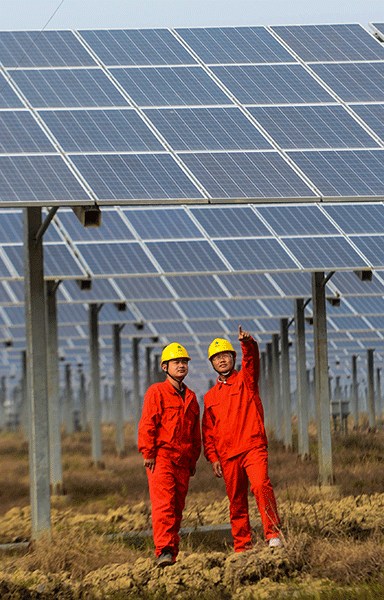
Engineers inspect the electric equipment of a photovoltaic power generation project under trial operation in Changxing county, Zhejiang province.(Photo/Xinhua)
Obstacles remain
Shi Lishan, deputy director-general of the New and Renewable Energy Department of the National Energy Administration, said the cost of solar power generation must be lowered, and many other technical and systemic obstacles need to be overcome to promote the growth of clean energies.
A large proportion of the electricity generated by wind and solar power goes unused as a result of insufficient transmission capacity.
In November, the State Council said China plans to install as much as 58 gigawatts of nuclear power by 2020. "Most of the additional capacity and new plants will be put into operation after 2020, so nuclear power is very likely to be emphasized in the new (five-year) plan, but that will mainly have an impact after 2020," Lin said.
Ma Jiantang, vice-dean of the Chinese Academy of Governance, said that since 2004, the pace of energy consumption growth has been lower than the rate of economic growth, especially in recent years. Although the proportion of alternative sources in the energy mix has gradually increased, coal's dominant role will not change, as a result of China's endowment of energy and resources, he said.
Improving energy efficiency should also be highlighted, he added, noting that last year, energy consumption was equivalent to 4.26 billion metric tons of standard coal, accounting for 23 percent of global consumption, but the share of GDP only accounted for about one-eighth of the total worldwide.
By 2020, China aims to cut carbon intensity-the amount of carbon dioxide produced per unit of GDP-by 45 percent from the 2005 level, and by 2030, the reduction should be 60 percent to 65 percent of the 2005 figure.


















































